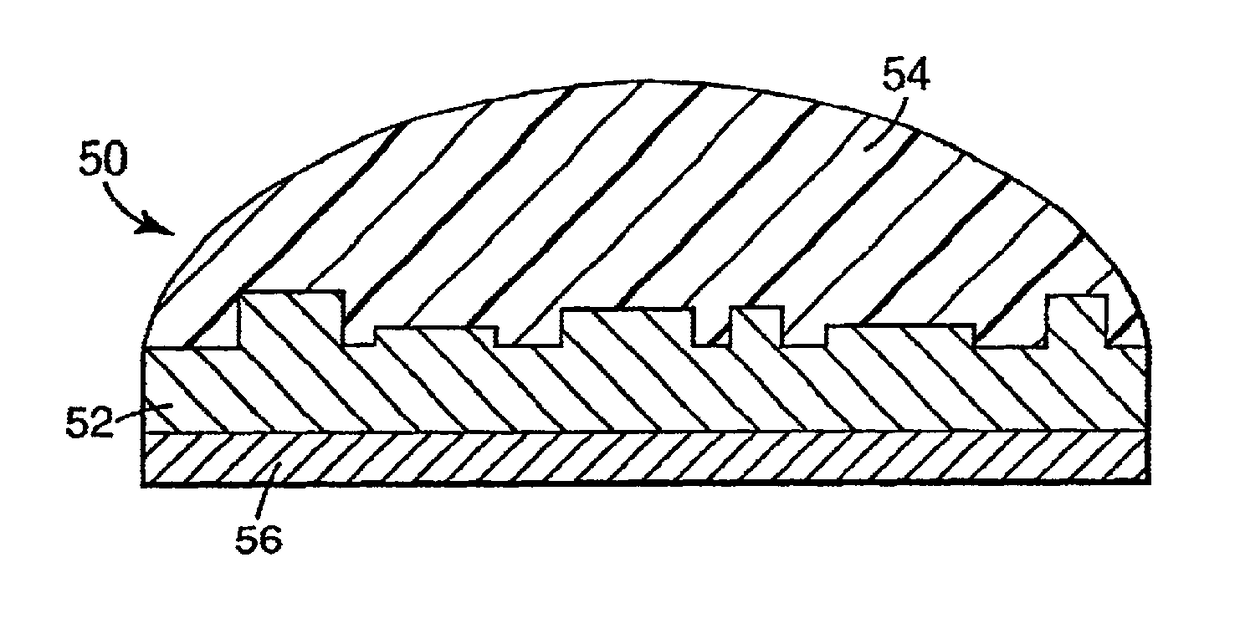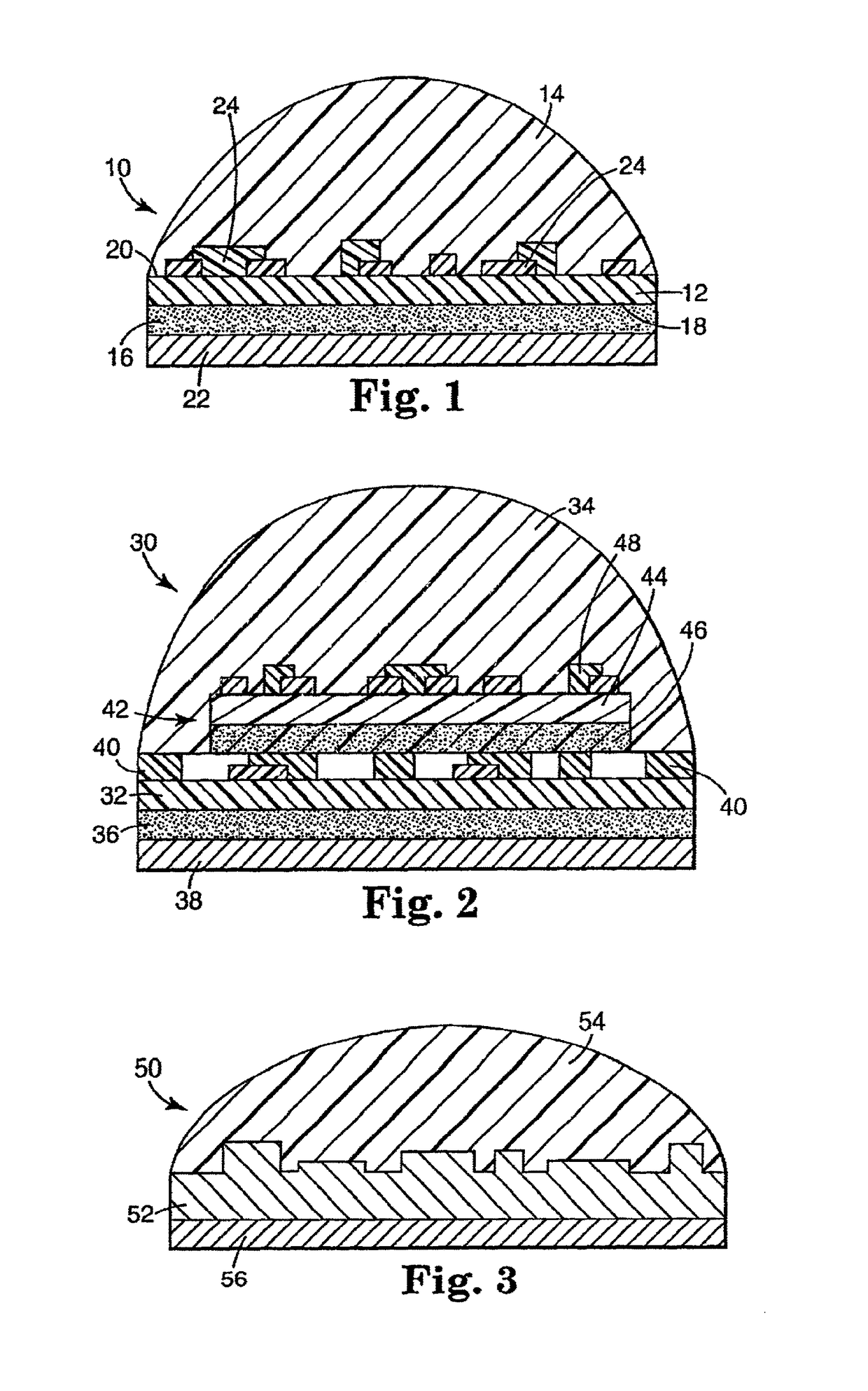Flexible polyurethane material
a polyurethane and flexible technology, applied in the field of flexible polyurethane materials, can solve the problems of rigid polyurethanes that are susceptible to abrasion and scratching, materials that do not demonstrate an appropriate level of self-healing, and specific substrates that are not suitable for use with conventional polyurethanes, etc., to achieve the flexibility of polyurethane, reduce the tendency of polyurethane, and weather resistant properties
- Summary
- Abstract
- Description
- Claims
- Application Information
AI Technical Summary
Benefits of technology
Problems solved by technology
Method used
Image
Examples
example 1
[0058]The first component, which was polyester polyols / diols based, was prepared by mixing 31.9 grams of Formrez-55-225, 30 grams of Formrez-55-112, and 30 grams of Tone-301 in a round bottom flask and heated to 70° C. The admixture was agitated and de-gassed for 4 hours by vacuum (below about 30 inch Hg) until all the bubbles were stripped off. The temperature of the admixture was cooled down to about 50° C. and 0.06 grams of T-12, 0.2 grams Silwet L-7607, 1.5 grams of Uvinul N-539 and 1 gram of Tinuvin-292 were then added into the admixture. The admixture was agitated for 15 minutes. The formulation of the first reaction component, by weight percent, is listed in Table 2.
[0059]The second reaction component included 100 grams of polyisocyanate (Desmodur XP-7100). The first and second reaction components were mixed in a one to one volume ratio and poured on the above noted eleven substrates. The polyurethanes were cured 10 hours at 52° C. in a convection oven. The cured polyurethane...
examples 2-6
[0063]The first components used in Examples 2-6 were prepared according to the same procedure described in Example 1. The composition of the first component for each Example is listed in Table 1.
[0064]The second component used in Examples 2 was prepared by reacting 30 grams of Pluracol-538, and 70 grams of Vestanat IPDI for 4 hours at 80° C. The resulting second component included a mixture of polyisocyanate with primary and secondary isocyanate groups and monomeric Vestanat IPDI. The second component used in Example 3 was the same as the one utilized in Comparative Example 1. The second component in Example 3 comprises a mixture of secondary polyisocyanate and monomeric Desmodur W. The second component used in Example 4 was prepared by mixing 70 grams of polyisocyanate and 30 of Desmodur H. The second component used in Example 5 was prepared by mixing 50 grams of polyisocyanate and 50 g Desmodur H.
[0065]The polyurethanes were prepared by mixing the first component and the second co...
examples 13-18
[0068]The first components utilized in Examples 13-17 were prepared according to the same procedure described in Example 1. The ingredients were varied in order to demonstrate the effect of varying polyether contents on the cured polyurethane. The ingredients and amounts utilized are summarized in Table 5. Additionally, Example 18 included a black pigment added to the first reaction component.
[0069]The second component in Example 16 was the same as the one used in Comparative Example 2. The second component in Example 17 was the same one utilized in Comparative Example 1. Examples 13 through 15 and 18 utilized a polyisocyanate. The amount of the second component used in each Example is listed in Table 5.
[0070]The polyurethanes for Examples 13-17 were prepared by mixing the first and second components in a one to one volume ratio and then poured onto substrates (1) through (11). The polyurethanes were cured for 10 hours at 52° C. The black pigmented polyurethane in Example 18 was onl...
PUM
| Property | Measurement | Unit |
|---|---|---|
| weight percent | aaaaa | aaaaa |
| weight percent | aaaaa | aaaaa |
| weight percent | aaaaa | aaaaa |
Abstract
Description
Claims
Application Information
 Login to View More
Login to View More - R&D
- Intellectual Property
- Life Sciences
- Materials
- Tech Scout
- Unparalleled Data Quality
- Higher Quality Content
- 60% Fewer Hallucinations
Browse by: Latest US Patents, China's latest patents, Technical Efficacy Thesaurus, Application Domain, Technology Topic, Popular Technical Reports.
© 2025 PatSnap. All rights reserved.Legal|Privacy policy|Modern Slavery Act Transparency Statement|Sitemap|About US| Contact US: help@patsnap.com


